Striped Skunk
- January 15, 2024
- 0 comment
The Striped Skunk (Mephitis mephitis) is a captivating mammal known for its iconic black-and-white coloration and distinct, bushy tail. This small to medium-sized creature, with a body length ranging from 16 to 30 inches, is a familiar inhabitant of North America, spanning from Canada to Mexico. Its fur is characterized by bold black stripes running along its back and tail, creating a striking contrast with its white fur. The Striped Skunk is highly adaptable, thriving in various environments, including forests, grasslands, and even urban areas.
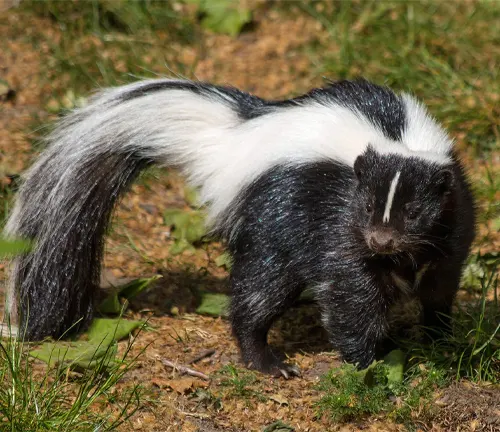
Primarily nocturnal, the Striped Skunk emerges under the cover of darkness, displaying solitary behavior with occasional territorial tendencies. One of its most infamous features is its defensive mechanism—a noxious spray emitted when it feels threatened. This spray serves as a deterrent against potential predators and has earned the skunk a reputation for its pungent defense strategy.
As an omnivorous creature, the Striped Skunk has a diverse diet, feeding on insects, small mammals, fruits, and plants. Reproducing through sexual reproduction, female skunks give birth to litters of 4 to 7 kits. In the wild, their life expectancy typically ranges from 2 to 3 years, and they play a vital role in controlling insect populations and contributing to the overall balance of ecosystems.
| Feature | Description |
|---|---|
| Scientific Name | Mephitis mephitis |
| Common Name | Striped Skunk |
| Size | Small to medium-sized; body length ranges from 16 to 30 inches (40-76 cm) |
| Weight | Typically weighs between 4 to 15 pounds (1.8-6.8 kg) |
| Coloration | Distinct black and white stripes along the back and tail |
| Fur Type | Dense, coarse fur |
| Habitat | Diverse habitats including forests, grasslands, and urban areas |
| Range | North America; widespread from Canada to Mexico |
| Activity | Nocturnal; primarily active during the night |
| Diet | Omnivorous; feeds on insects, small mammals, fruits, and plants |
| Behavior | Solitary, with territorial tendencies; emits defensive spray when threatened |
| Life Expectancy | Typically 2 to 3 years in the wild |
| Reproduction | Sexual reproduction; gives birth to 4 to 7 kits in a litter |
| Defense Mechanism | Infamous for spraying a noxious liquid as a defense mechanism |
| Predators | Predation by owls, foxes, and larger mammals; spray serves as a deterrent |
| Adaptability | Can adapt to various environments, including urban areas |
| Conservation Status | Least Concern (population stable) |
Striped Skunk: Unveiling Nature’s Black-and-White Marvel

The animal kingdom is a diverse realm filled with fascinating creatures, and among them stands the striped skunk, a creature known for its distinct black-and-white fur and unmistakable spray. In this article, we will delve into the intriguing world of striped skunks, exploring their physical characteristics, habitats, behavior, and the essential role they play in ecosystems.
Physical Characteristics
The striped skunk is easily recognizable by its unique black-and-white fur pattern. Ranging in size and weight, these creatures exhibit variations in their physical features, making each skunk distinctive in its own right.
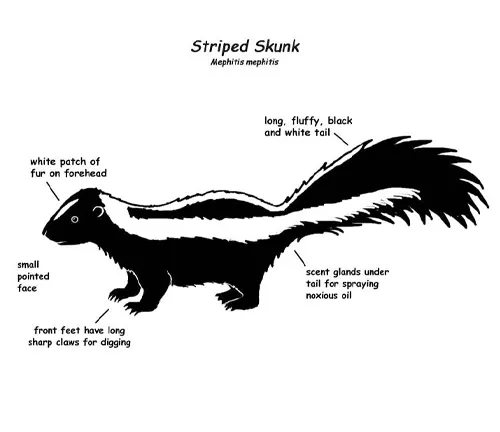

Habitat and Distribution
While often associated with wooded areas, skunks can adapt to various environments. Understanding their natural habitats and global distribution is crucial to appreciating their role in the broader ecosystem.
Behavioral Patterns
Skunks are nocturnal creatures with interesting dietary preferences and foraging habits. Exploring their behavioral patterns sheds light on their importance in the animal kingdom.
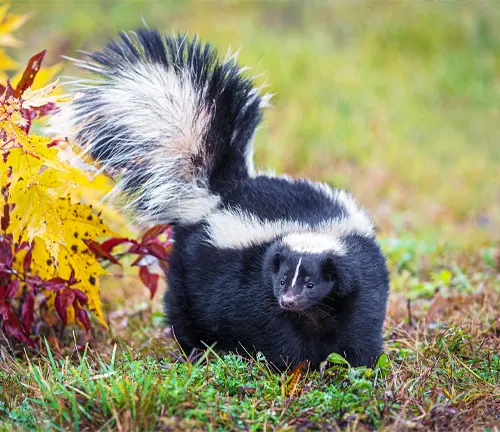
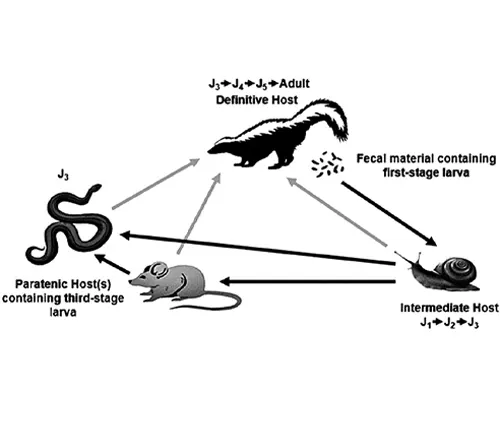
Life Cycle
From mating rituals to the gestation period and birth, the life cycle of a striped skunk is a fascinating journey. Unraveling these aspects provides insights into their reproductive strategies.
Defense Mechanisms
Perhaps the most infamous aspect of skunks is their defensive spray. This section will explore the details of their spray, along with warning signs that precede this pungent defense mechanism.
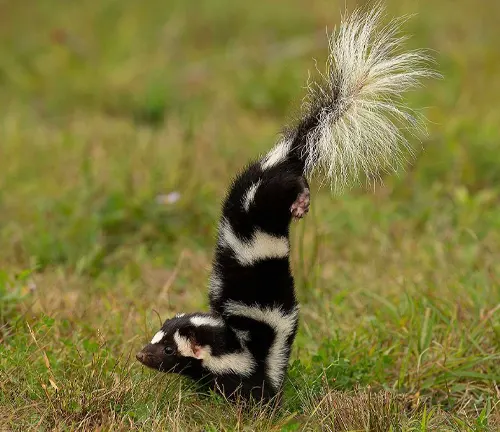
Relationship with Humans
As human settlements encroach on wildlife habitats, encounters with skunks in suburban areas become more common. Here, we offer tips on avoiding such encounters and fostering a harmonious coexistence.

Wildlife Conservation
Skunks play a vital role in ecosystems, and understanding their significance is paramount for effective conservation efforts. This section will discuss the challenges and measures taken to protect these creatures.
Common Misconceptions
Addressing myths about skunks is essential for dispelling fear and misinformation. We’ll separate fact from fiction, offering a clearer understanding of these intriguing animals.
Skunk as a Symbol
Cultural representations of skunks vary widely. This section explores the positive and negative associations attached to these creatures in different societies.
Adaptability to Urban Environments
Skunks have proven their adaptability by thriving in urban settings. We’ll discuss the challenges they face and the benefits of their presence in human-dominated landscapes.
Health Risks
While skunks contribute to the ecosystem, they also pose health risks due to zoonotic diseases. Pet owners, in particular, should be aware of the precautions to take when living in proximity to skunks.
Skunks as Pets
Owning a skunk as a pet comes with legal considerations and unique challenges. This section provides insights into the responsibilities and rewards of having a skunk as a companion.
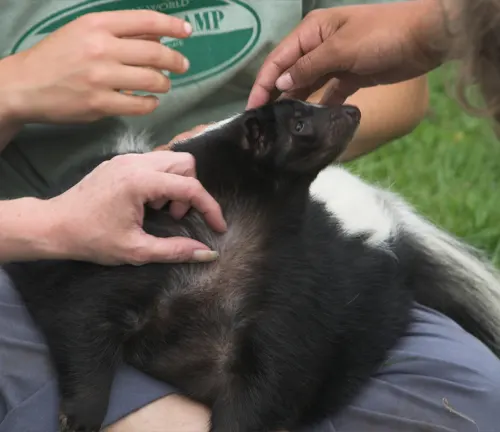
Conservation Measures
Community initiatives and educational programs are essential for skunk conservation. We’ll explore the role of local efforts in ensuring the well-being of these creatures.
Different Species
Eastern Striped Skunk
(Mephitis mephitis mephitis)
Found in the eastern part of North America, this subspecies is characterized by the classic black-and-white coloration.
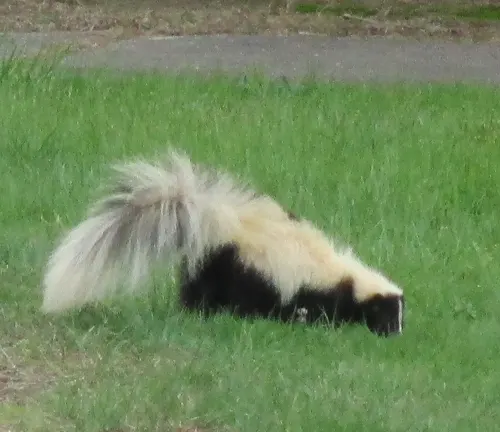

Plains Striped Skunk
(Mephitis mephitis elongata)
Inhabiting the central and western parts of North America, the Plains Striped Skunk exhibits variations in size and fur color.
California Striped Skunk
(Mephitis mephitis annectens)
Native to California and parts of the southwestern United States, this subspecies may have slightly different fur patterns compared to its counterparts.
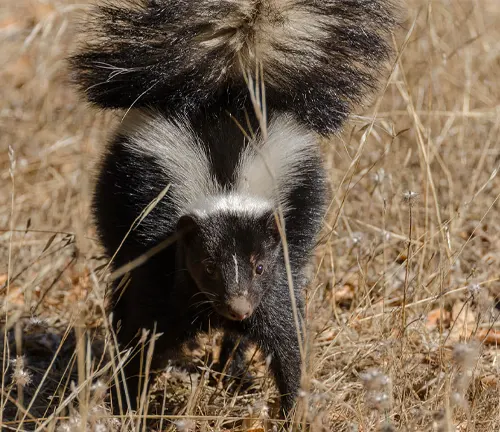
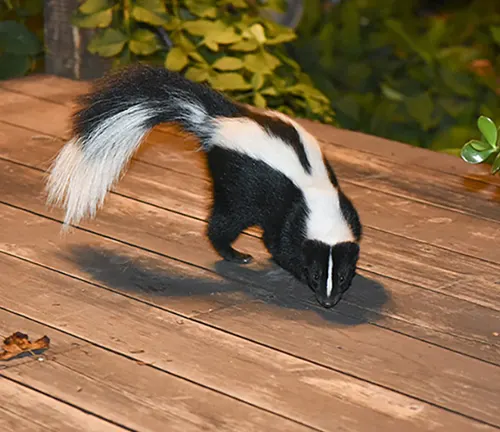
Texas Striped Skunk
(Mephitis mephitis texensis)
Specifically found in Texas, this subspecies may show regional adaptations and variations in behavior.
Florida Striped Skunk
(Mephitis mephitis nigrescens)
In the southeastern United States, including Florida, this subspecies may have distinctive characteristics compared to others.
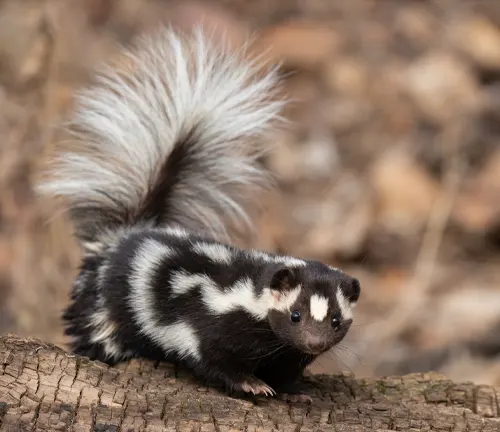
Frequently Asked Questions (FAQs)
- What do striped skunks eat in the wild?
Striped skunks have omnivorous diets, consuming a variety of foods such as insects, small mammals, fruits, and plants. - How far can a skunk spray reach?
A skunk’s spray can reach up to 10 feet, and it is used as a defensive mechanism when the skunk feels threatened. - Are there any natural predators of striped skunks?
Predators of striped skunks include owls, foxes, and coyotes. However, their primary defense mechanism often deters predators. - Do skunks hibernate during winter?
While skunks may experience reduced activity during winter, they do not truly hibernate. They remain somewhat active and may emerge from their dens on milder days. - How many babies do striped skunks have in a litter?
Striped skunks typically have 4 to 7 kits in a litter, and the kits are born blind and deaf. - What is the lifespan of a striped skunk in the wild?
In the wild, striped skunks usually have a lifespan of about 2 to 3 years due to predation and environmental factors. - Can skunks climb trees?
While skunks are not known for climbing, they are agile and can climb low branches if necessary. - Do skunks carry diseases?
Skunks can carry diseases such as rabies. It’s essential to avoid contact and seek medical attention if bitten. - Are skunks territorial?
Skunks can be territorial, especially during the breeding season. They mark their territories with scent markings. - How do you remove the smell of skunk spray?
A common remedy for skunk odor is a mixture of hydrogen peroxide, baking soda, and dish soap. This mixture can help neutralize the scent. - Do striped skunks make good pets?
Keeping striped skunks as pets is not recommended in many places, as they have specific needs and may not adapt well to domestic settings. - Can skunks see well in the dark?
Skunks have excellent night vision, which aids them in their nocturnal activities such as foraging for food. - What is the purpose of the white stripe on a skunk’s back?
The white stripe serves as a warning signal to potential predators. It indicates the skunk’s ability to spray a noxious liquid as a defense mechanism. - Do striped skunks have any natural predators?
Yes, some predators like birds of prey, foxes, and larger mammals may prey on striped skunks. However, their spray acts as a strong deterrent.









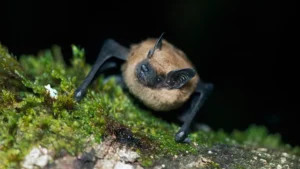
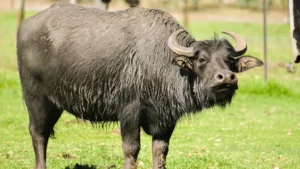
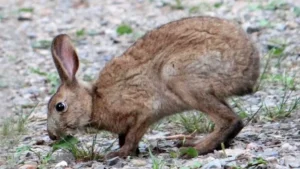

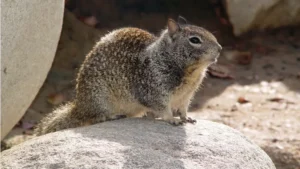
Leave your comment